Minarets of Prominence: Mughal and Timurid Empires
If you thought the Mughal Empire was the last great Muslim dynasty, think again! Meet the Timurids, descendants of Genghis Khan who, like their Mughal contemporaries, were a powerful Muslim dynasty that ruled much of Central Asia.
In this second part of our series on ‘Minarets of Prominence’ we explore the history and Islamic architecture of the Timurid dynasty and the Mughal Empire in India, which served as a continuation of the Timurid dynasty.
The Timurid dynasty was ruled by Timur, a great but brutal conqueror, also known as Timurlane or Tamerlane, ("Timur the Lame", through having famously sustained a leg injury at a young age that caused him to limp when walking, earning him the nickname). He controlled a massive domain that stretched across Central Asia, encompassing parts of modern-day Türkiye, Iran, Uzbekistan and Afghanistan.
The Timurid Empire (1370-1507) is famous for a number of things, including the exquisite mosques and towers built by its emperors. Renowned around the world as some of the greatest architectural feats ever built, minarets were crafted with precision and complexity centuries ahead of their time.
The Timurid Empire set the stage for the Mughal Empire by building a number of prominent minarets throughout modern-day Afghanistan, Iran, and Iraq, which were completed during the reign of Shah Rukh, who later became Timur's most prolific builder. When the Timurid Empire fell in 1507, a distant descendent of Timur named Babur eventually founded the Mughal Empire. The Mughals ruled over much of modern-day India and Pakistan and created some of the world’s most iconic buildings, such as the Taj Mahal.
Afghanistan
Great Mosque of Herat
Herat is the third-largest city in Afghanistan, and it was the capital of the Timurid Empire from 1405-1507. The Great Mosque of Herat is an architectural wonder.
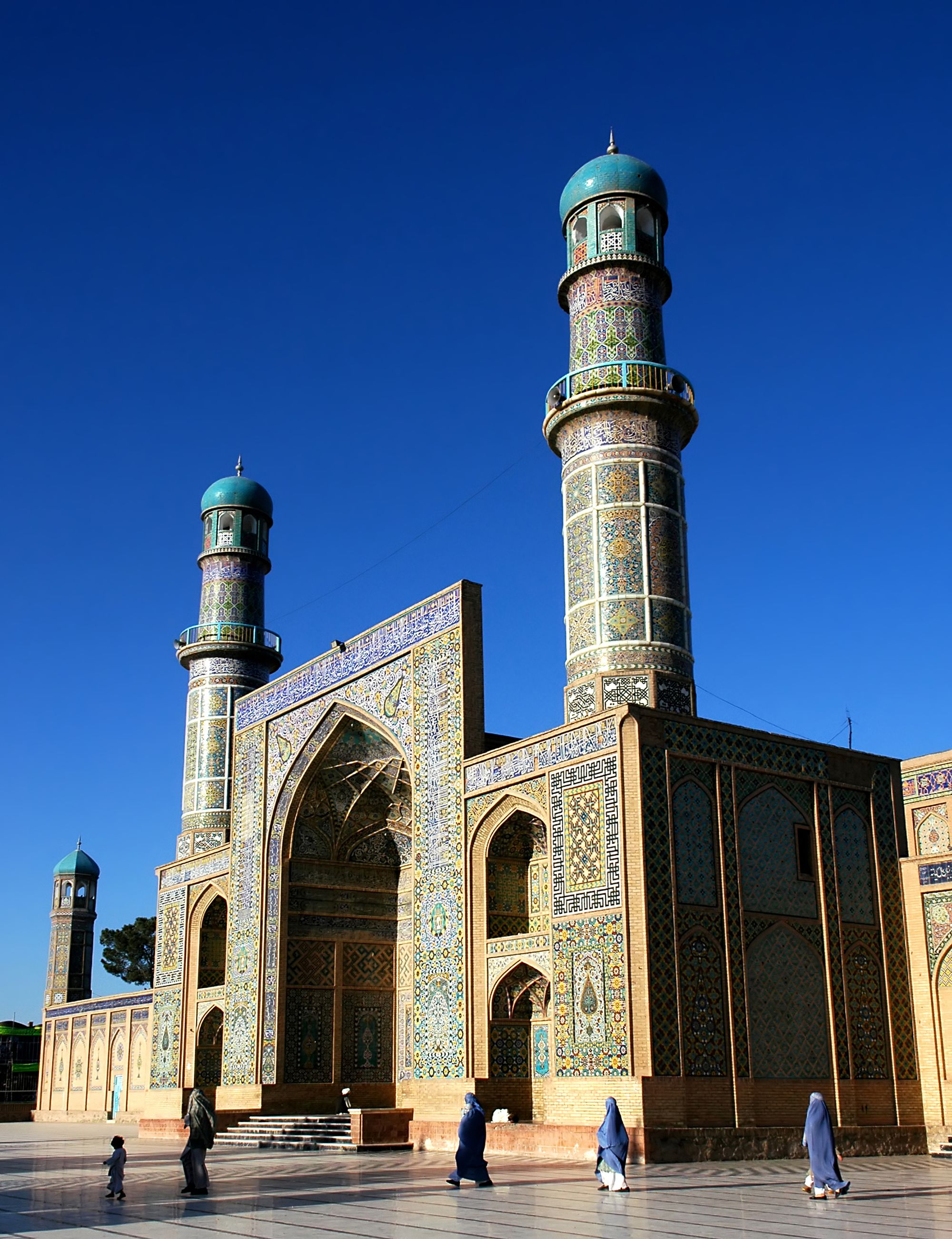
Located in the heart of Herat, the mosque was built in the 1200s and remains a place of worship to this day. It features stunning geometric tilework and is an architectural masterpiece created as an homage to the Timurid era. The mosque continues to be restored after damage sustained during armed conflicts throughout history.
The entrance to the Great Mosque of Herat displays all of the typical elements of Timurid architecture such as ornately carved Muqarnas and minarets framing the monumental arch.
Blue Mosque of Mazar-i-Sharif
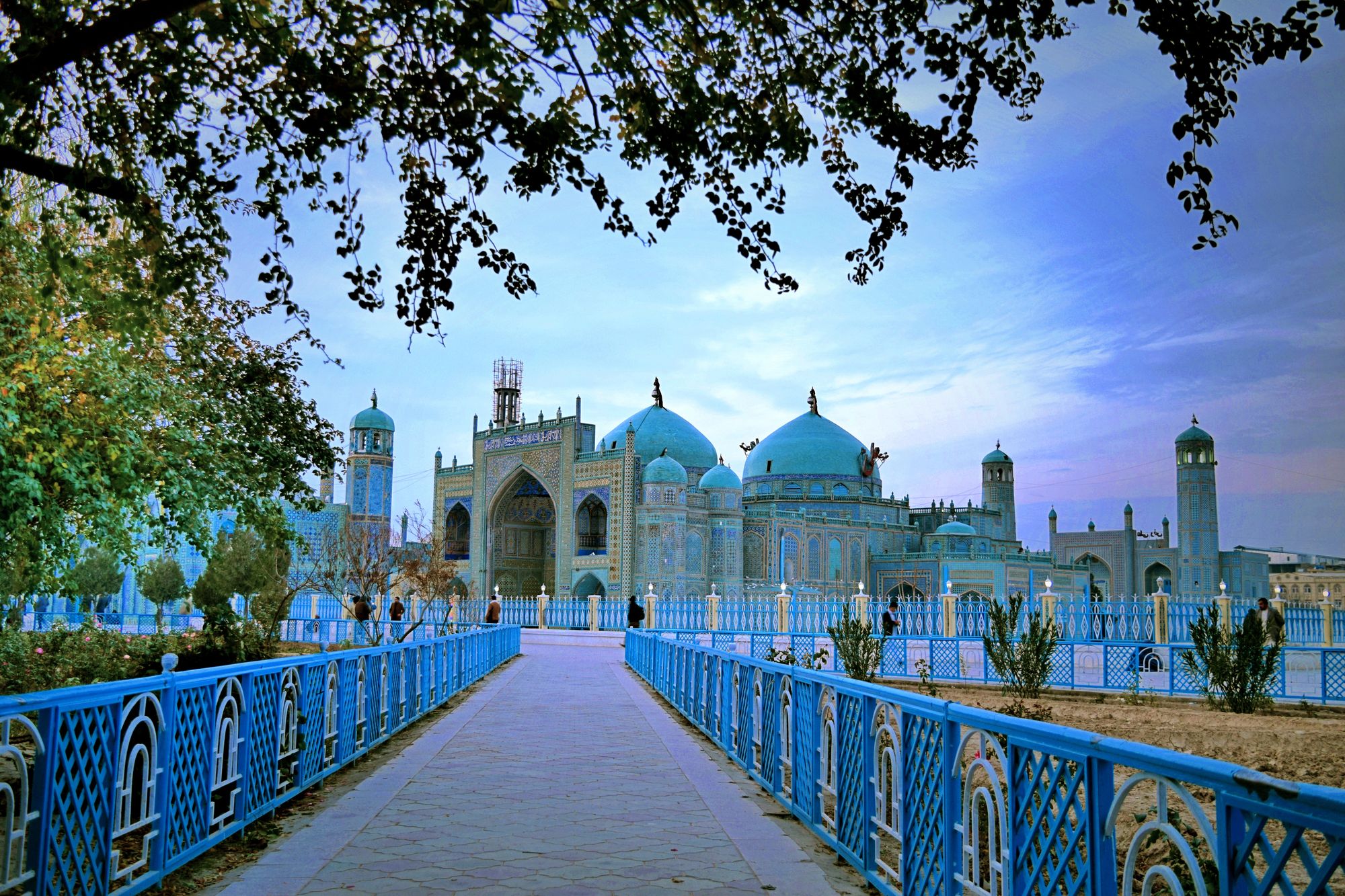
Maraz-i-Sharif is the fourth largest city in Afghanistan and was a prominent city of the Timurid Empire. Completed in 1481, the Blue Mosque of Maraz-i-Sharif is the most impressive mosque in the region, designed with typical elements of Timurid architecture. The main entrance in particular features deep red and yellow tones, while the blue tiles on the domes feature a vibrant shade of light blue. Although much of the tiling work is not original, tourists can still get a good idea of what this mosque looked like in Timurid times.
Ruins of the Musalla Complex

Located in the ancient city of Herat in Afghanistan, the Musalla Complex was once an impressive example of Timurid architecture. Today only four minarets remain at the edge of the entire compound. Though much of it is in ruins, this building still shows the power and influence of the Timurid Empire, which ushered in an age of learning, innovation and impressive architecture.
Uzbekistan
Ulugh Beg Madrasah, Samarkand
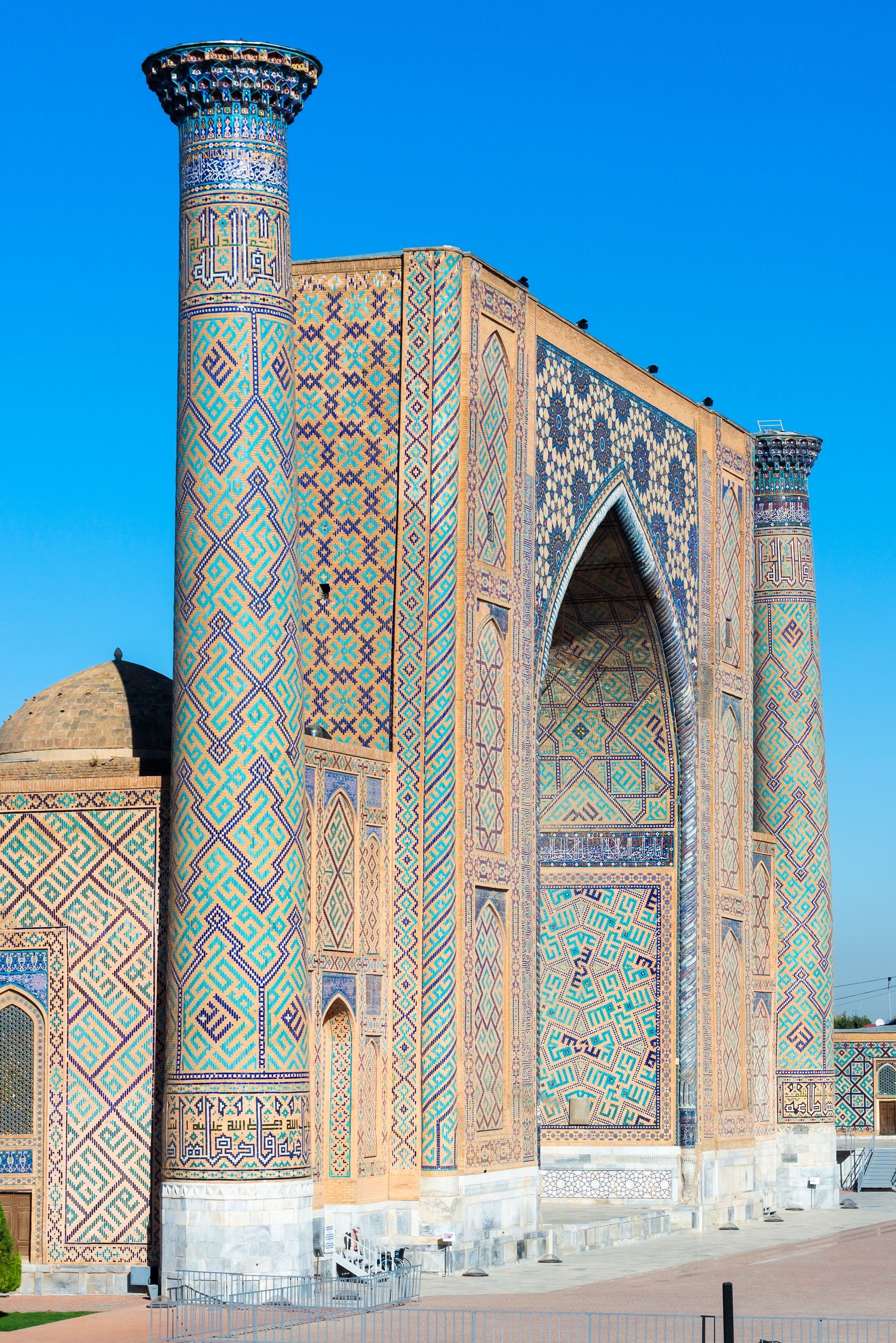
A Timurid Madrasah can be beautiful, but there is nothing like viewing the many majestic Madrasahs of Samarkand in person. The Ulugh Beg Madrasah was built during the Timurid Renaissance and is one of the most famous architectural wonders of the period. Its iconic facade, embellished with blue and gold tiles, is flanked on either side by two beautifully decorated minarets.

Sher-Dor Madrasah, Samarkand
The Ulugh Beg Madrasah, which lies directly opposite the Sher-Dor Madrasah, was built much later, in the 17th century (1619- 1636). Even though this was at the end of the Timurid Renaissance, you can still see many of the same features. Although the newer built Sher-Dor Madrasah is known for the two domes and the bright orange tiger mosaics above the main entrance, it still shares a coherent appearance with many of Samarkand’s older monuments.
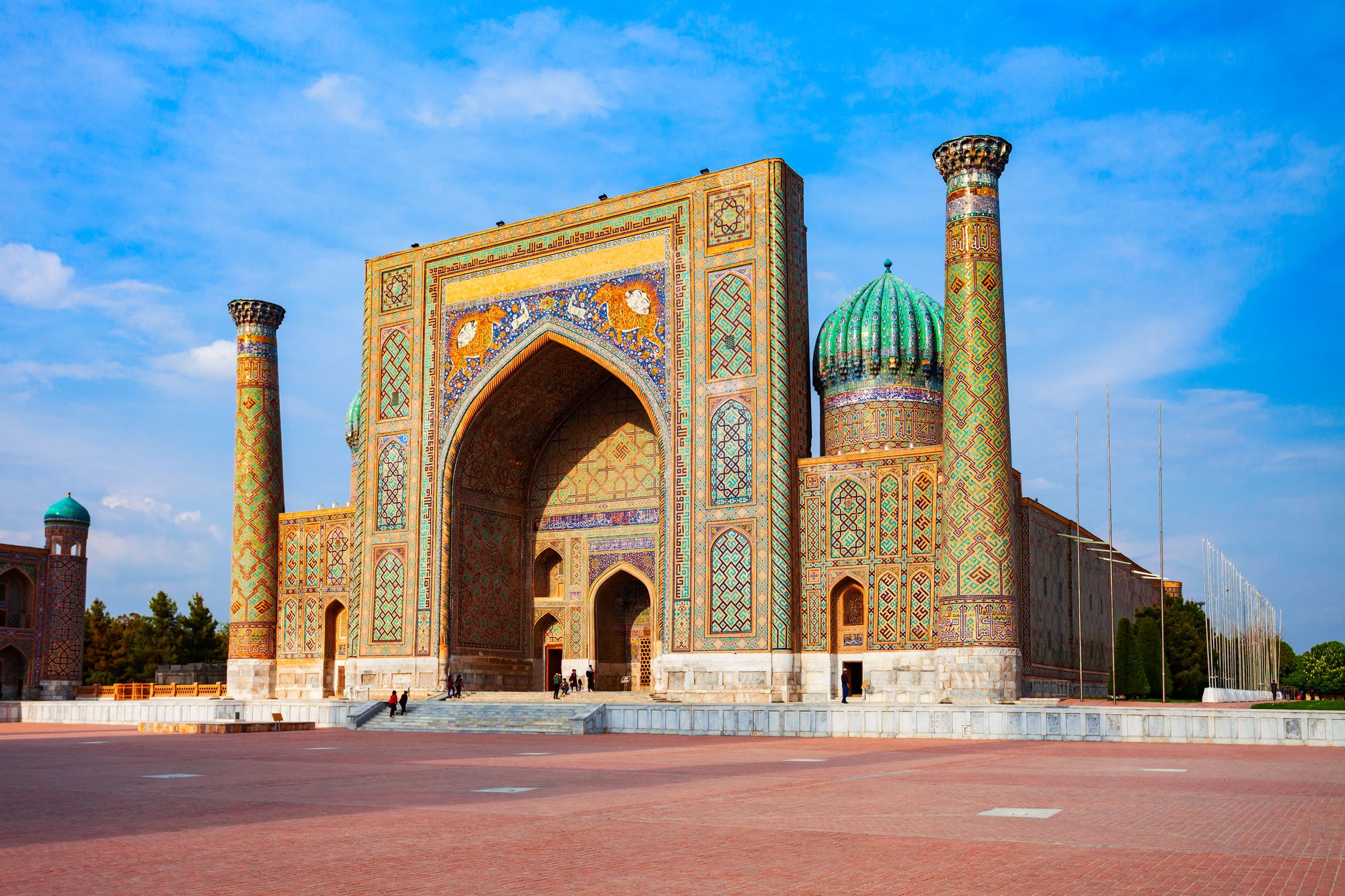
Bibi-Khanym Mosque, Samarkand
The Bibi-Khanym Mosque was commissioned by Tamerlane to be built for his senior wife Saray Mulk Khanym (Bibi Khanym was her nickname, meaning 'elder princess'). A Persian legend is that the mosque’s name means “Solace of the Lady” because the building was completed in such a hurry that Bibi-Khanym never had a chance to visit it before her death. It is believed that the original building collapsed due to earthquakes and was rebuilt a number of times to where it stands today.
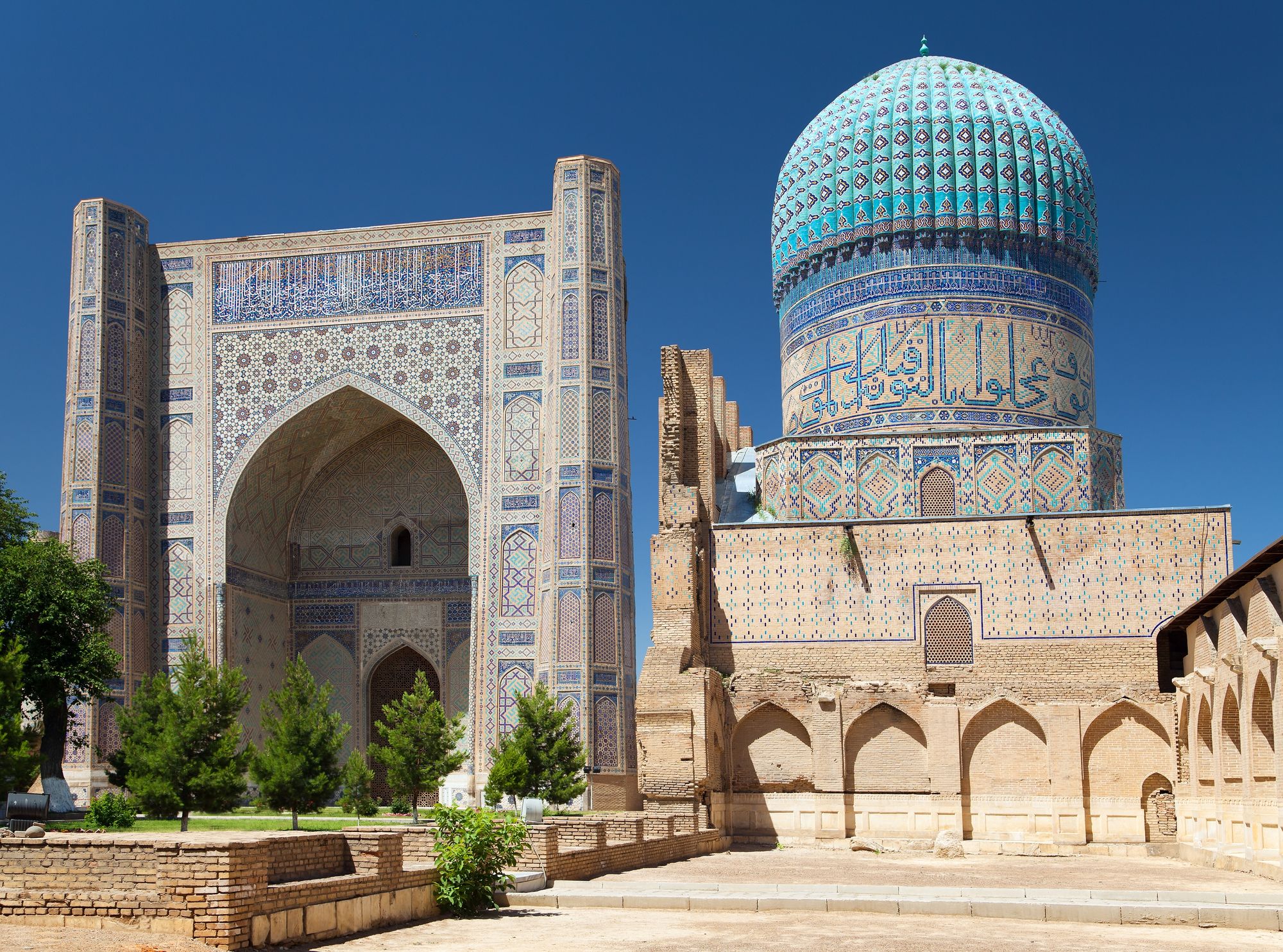
The height and the beauty of the minaret is truly a marvel, even many centuries later. It seems these magnificent monuments have stood the test of time as many traders travelling along the Silk Road (connecting China in the east with Iran, Egypt and the Mediterranean in the west) stopped in Samarkand.
Considered one of the finest architectural masterpieces in the world, this mosque is known for its two monumental arches that are over 90 metres apart and is now part of a large UNESCO World Heritage Site known as “Samarkand – Crossroad of Cultures”.
Kok Gumbaz Mosque, Shahrisabz
The Kok Gumbaz Mosque is the main mosque of Shahrisabz and is located near Timur's summer palace. It was completed in 1436 when Shah Rukh ruled the empire. The large central courtyard is surrounded by a colonnade of pointed arches and intricate blue tilework surround all four walls. Today, the mosque, along with several other monuments, is consolidated into a UNESCO World Heritage Site known as the Historic Centre of Shahrisabz.
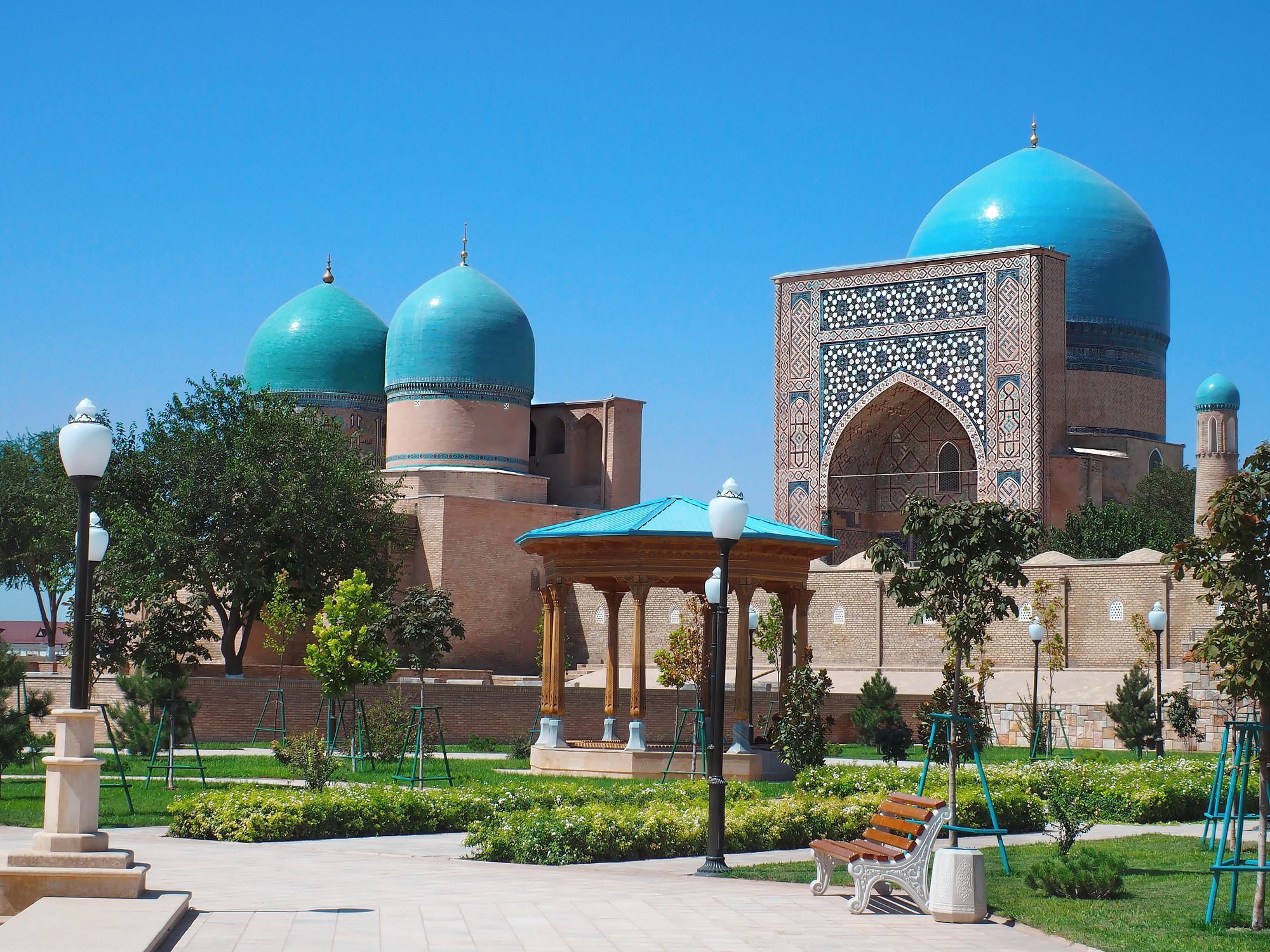
Hazrat Imam Mosque, Tashkent
Many modern projects in Uzbekistan try to commemorate the glory days of the former Timurid Empire. One example is the Hazrat Imam Mosque, a 21st century architectural work that was officially opened to the public in 2007. It was built in Tashkent, now the most populous city in all of Central Asia. The builders deliberately borrowed elements from Timurid architecture, including the domes, blue tile work, and a monumental entrance at the front of the mosque.
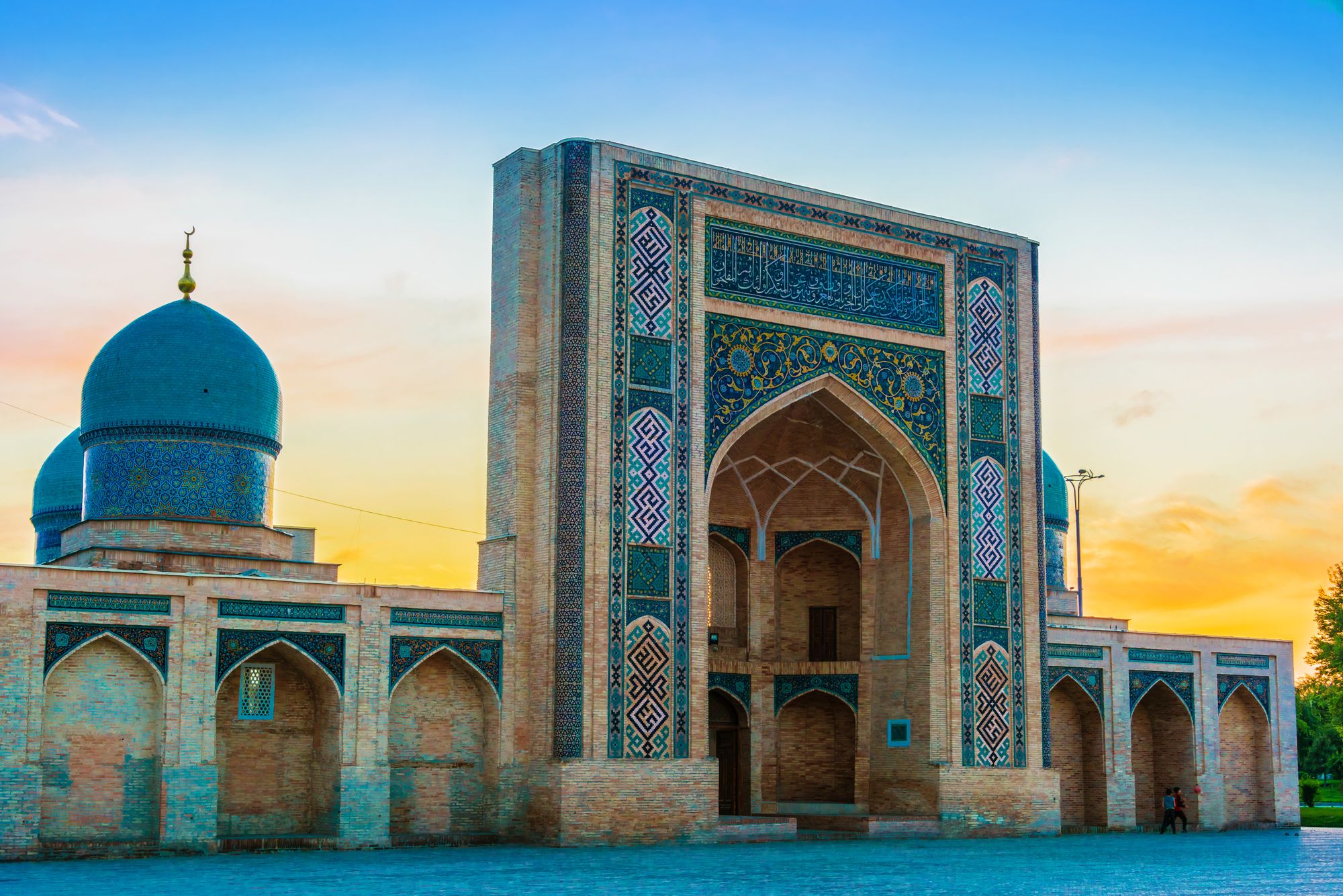
The Mughal and Timurid empires contain some of the most impressive pieces of Muslim architecture in the world. The Timurids borrowed heavily from Mughal architecture, creating some of the most striking mosques in modern Uzbekistan.
The legacy of Timur, the Timurid Empire and the Timurid Renaissance all remain prevalent in the overall culture and heritage of contemporary Uzbekistan.
India and Pakistan
The Great Mughals ruled much of India and Persia from the 16th to the 19th centuries. Their rule was characterised by tolerance and religious diversity, where Muslims, Hindus, Sikhs and Christians all lived together representing the Islamic ideals of inclusion. Mughal patronage of art and architecture resulted in some of the finest buildings in the world. Travellers can visit forts, tombs and gardens that represent the legacy of this influential and enduring empire.
The Mughals, who ruled over much of what is now India, Pakistan, Bangladesh and Afghanistan, built dozens of incredible pieces of architecture, including the Taj Mahal and the Red Fort. Some of their greatest works reveal the evolution of the mighty Mughal Empire, which travellers love to explore.
Taj Mahal, Agra, India
Shah Jahan was the famous Mughal Emperor who built the Taj Mahal. He ruled from 1628 to 1658 during a period that marked a cultural peak for the Mughal Empire. The fine details and extravagant materials used to build the Taj Mahal show how powerful the Mughals were at the time.

The Mughals were a powerful dynasty that built not only the Taj Mahal, but dozens of other incredible buildings in India, Pakistan and Bangladesh. They combined Islamic and Hindu architecture by mixing materials like red sandstone and white marble. Today, Mughal architecture is one of the most influential styles in the Indian subcontinent, and some of the region’s most visited attractions are the buildings left behind by Mughal rulers such as Akbar, Shah Jahan and Aurangzeb.
There are three main emperors whose rules illustrate the rise and fall of the Mughal empire, the first of which was Akbar, son of the founder of the Mughal Dynasty. He was a conqueror who significantly increased the size of the empire and was known as a tolerant ruler who accepted all faiths including Hinduism and Jainism. He was also a great patron of the arts and academics, and commissioned the construction of several of the greatest works of Mughal military architecture.
Red Fort, Delhi, India
Built of red sandstone, the Red Fort has several monumental gates and is one of several iconic buildings made from this particular material, including the Agra Fort, the Jama Mosque and the outbuildings of the Taj Mahal complex.
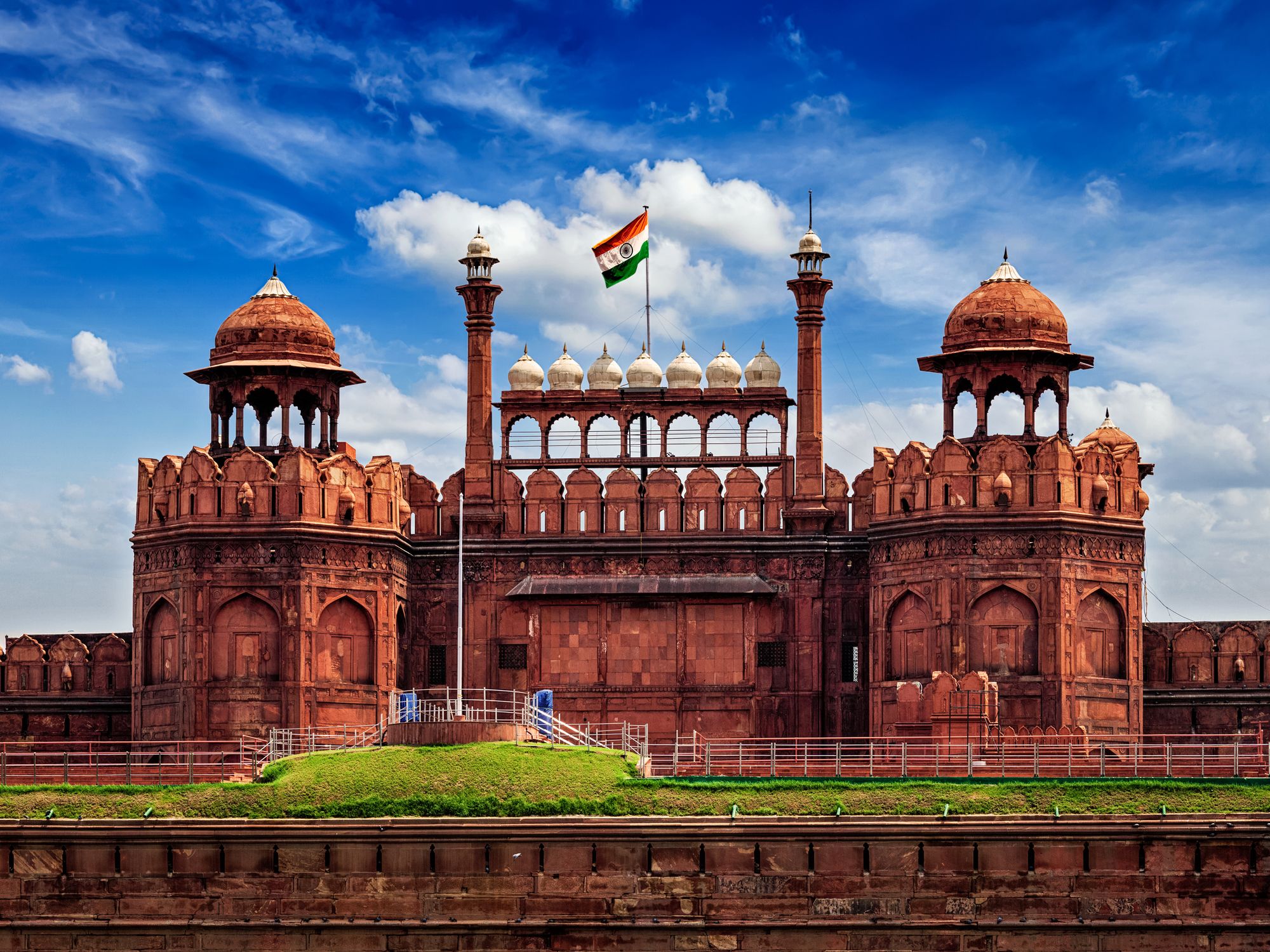
Jama Mosque, Delhi, India
Jama Masjid is a term that can be translated as Congregational Mosque or Friday Mosque. The Jama Mosque in Delhi is one of the largest mosques in all of India and was completed in 1656. Originally, the area around the mosque was a walled city known as Shahjahanabad, named after the Mughal Emperor Shah Jahan.
In the mosque there is a central prayer hall with two Minarets. Just outside the prayer hall is the courtyard, which is completely surrounded by a series of walls with a large fountain in the centre. It is located just across from Agra.
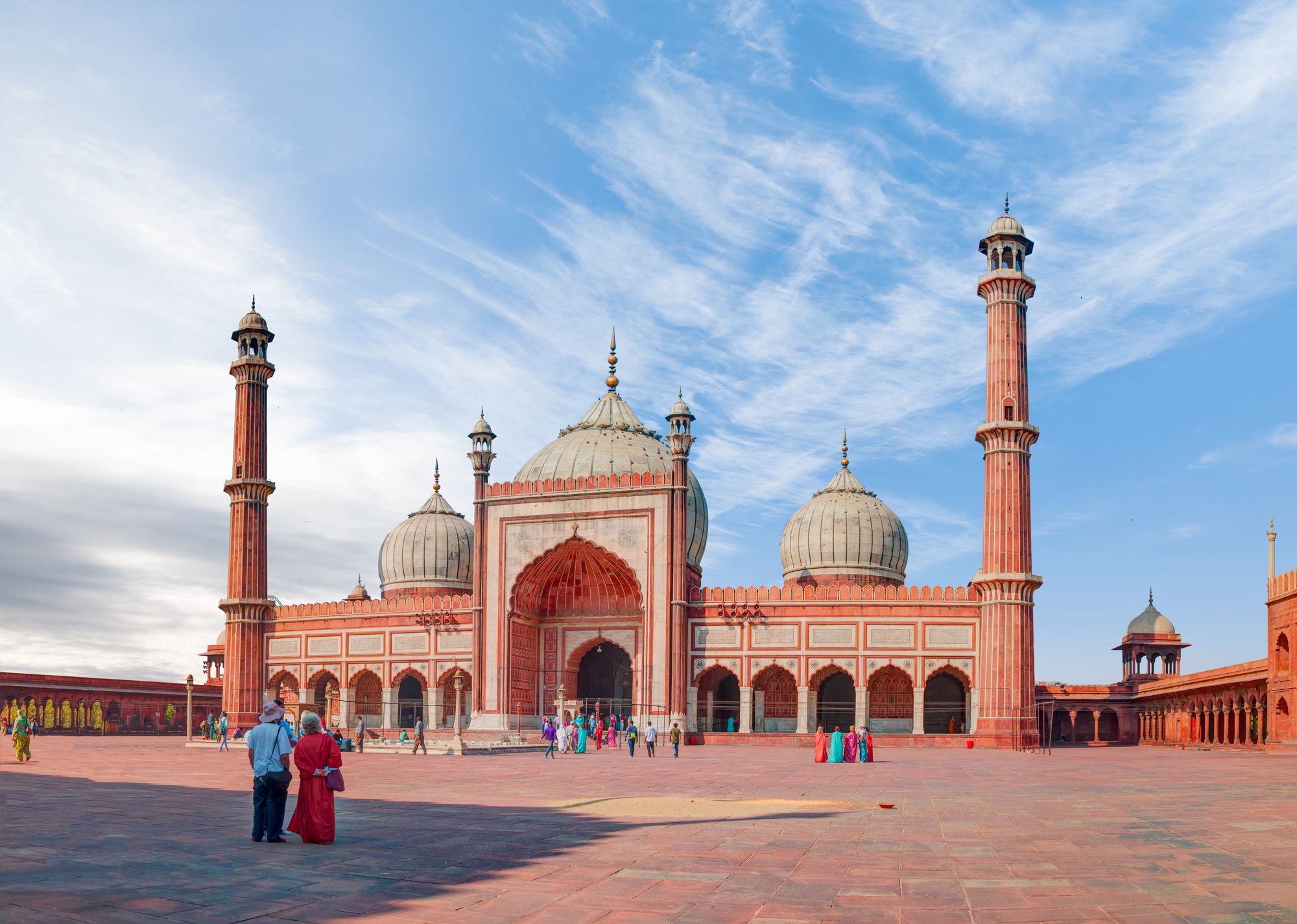
Wazir Khan Mosque, Lahore, Punjab, Pakistan
Work on the Wazir Khan Mosque started in 1634 and it took over 7 years to build. It was built during the reign of Shah Jahan at a cultural peak for the Mughal Empire. The mosque boasts intricate decorations with glazed ceramic tiles that are intricately decorated with bright colours. Most of the designs feature flowers and plants in addition to shapes and geometric patterns.

Shah Jahan Mosque, Thatta, Sindh, Pakistan
In northern Pakistan is the Shah Jahan Mosque, a beautiful piece of architecture completed in 1659. The detailing and craftsmanship of this place of worship is truly stunning. The use of geometric designs and symmetry inside the mosque shows how closely connected the Mughal Empire was with the rest of the Islamic world. It is a must see symbolising the Mughal Empire at its peak.
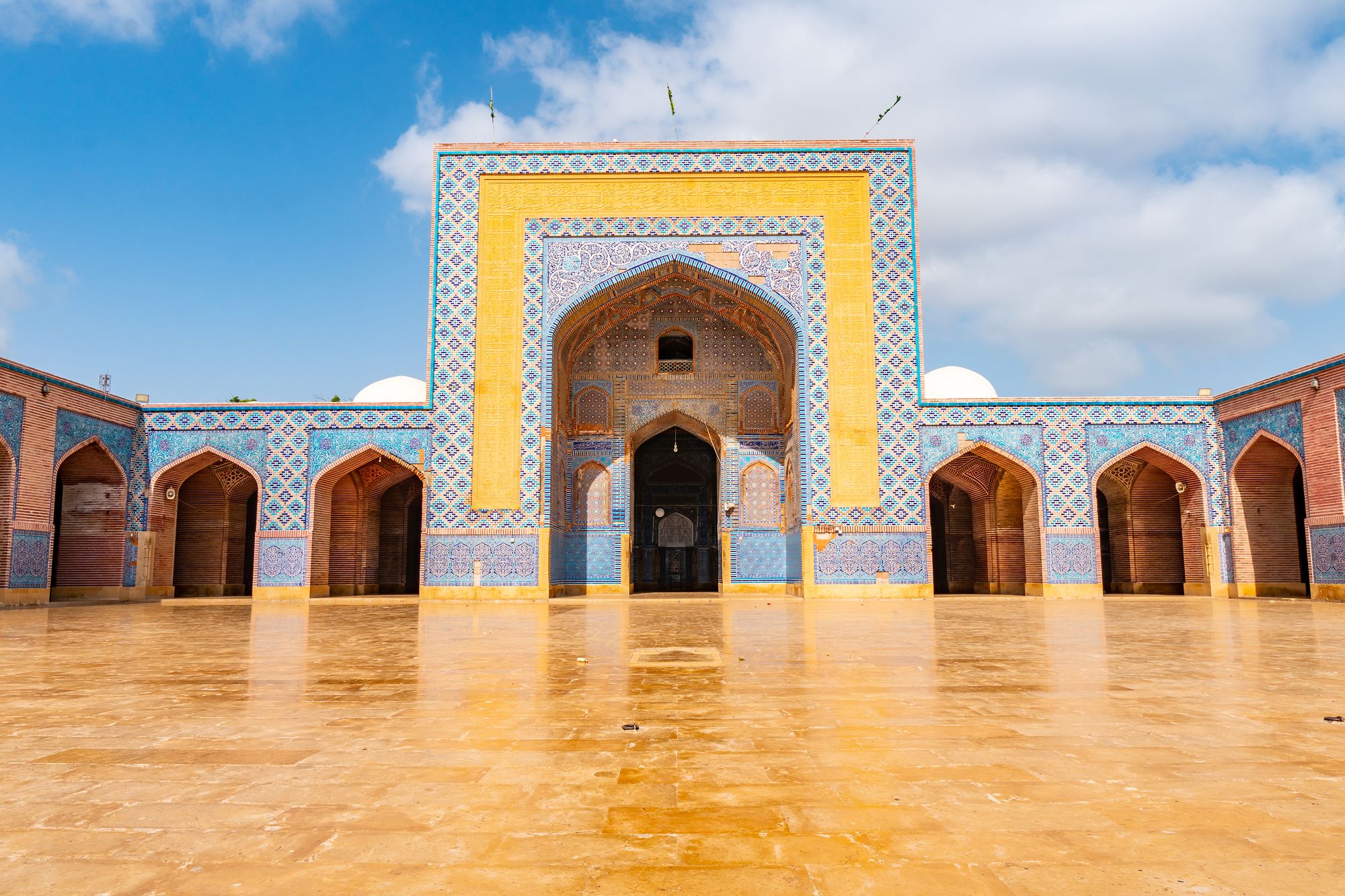
Bangladesh
At the height of Mughal rule, Bangladesh's capital, Dhaka, was a trading centre that contributed significantly to the empire's wealth. While not nearly as famous as Delhi, Agra or Lahore, the region still has a number of impressive Mughal-era monuments to visit.
Sat Gambuj Mosque, Mohammadpur
The Sat Gambuj Mosque (seven-domed mosque) is a Mughal-era mosque on the outskirts of Dhaka in the Mohammadpur area. Along with the Idrakpur Fort, it is an example of Mughal architecture in Bangladesh. It was built in the 1600s when Mughal control of the region was strong. It remains a popular destination for travellers in Bangladesh and surrounding countries.
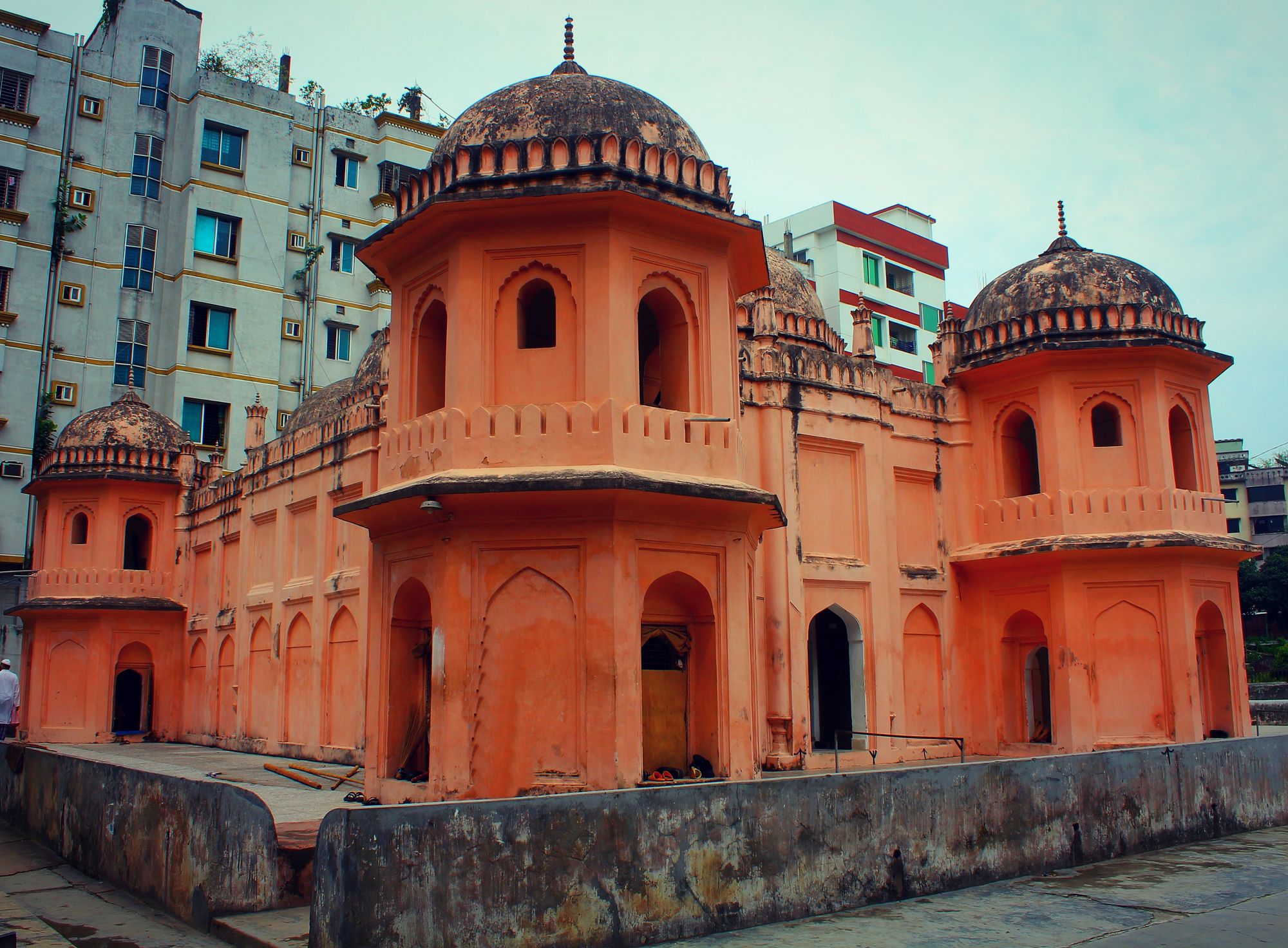
There are hundreds of incredible structures in the vast lands of India, Pakistan and Bangladesh. Some are in ruins while others are in excellent condition. From mosques and minarets to massive palaces and fortresses, these buildings have stood the test of time.
These architectural gems not only impress with their history but also with their beauty. So wherever you decide to visit, you are sure to find a halal-friendly hotel, villa or apartment on halalbooking.com that will warmly welcome you as you explore fascinating and colourful mosques that showcase all the different architectural designs.
